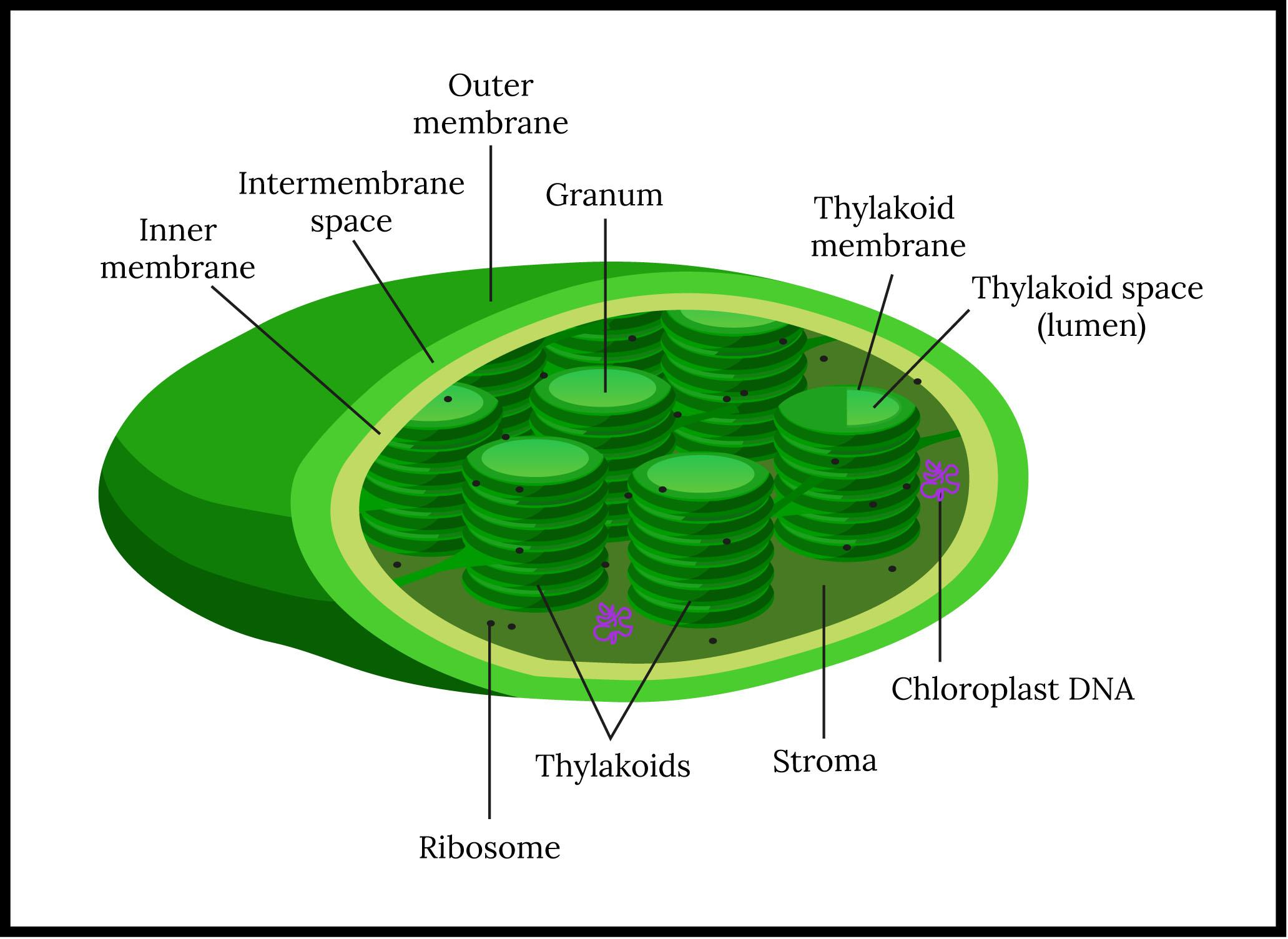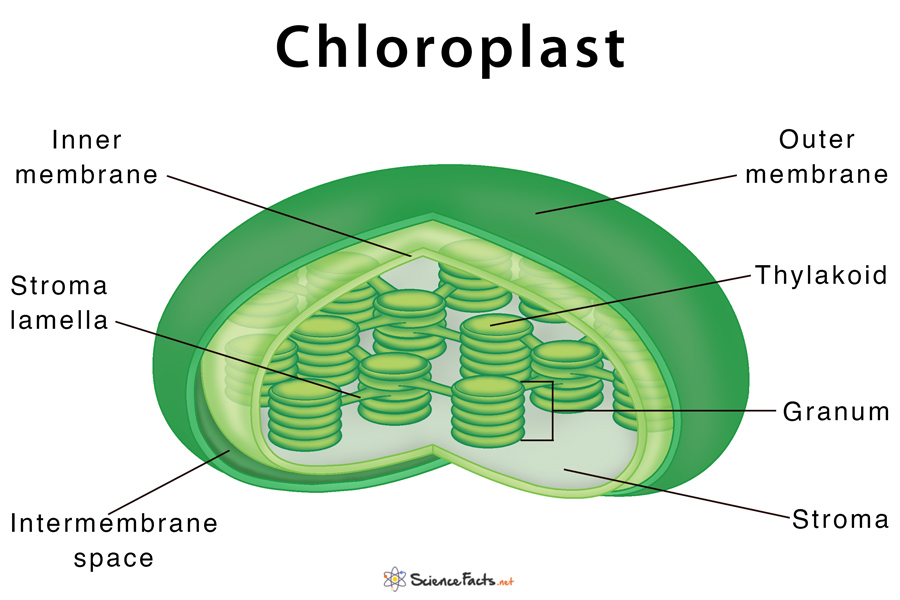Do chloroplasts contain stroma? Absolutely! This question delves into the heart of photosynthesis, the process that sustains life on Earth. Chloroplasts, the green organelles within plant cells, are the sites of photosynthesis, and the stroma, a semi-fluid matrix within the chloroplast, plays a crucial role in this complex process. It’s within the stroma that the magic of carbon fixation happens, transforming carbon dioxide into sugars that fuel the plant’s growth and development.
Imagine the stroma as a bustling factory, teeming with enzymes, ribosomes, and DNA. These components work together to carry out the light-independent reactions of photosynthesis, also known as the Calvin cycle. The stroma’s fluid environment allows for the movement of molecules and the efficient functioning of these reactions, making it a critical component of the photosynthetic machinery.
Chloroplast Structure and Function: Do Chloroplasts Contain Stroma
:max_bytes(150000):strip_icc()/cross-section-chloroplast-58d2e3815f9b5846830a7186.jpg)
Chloroplasts are essential organelles found in plant cells and some algae, playing a vital role in photosynthesis, the process by which light energy is converted into chemical energy. These intricate structures possess a unique architecture that facilitates the complex biochemical reactions involved in this crucial process.
Chloroplast Structure
Chloroplasts are enclosed by a double membrane system, similar to mitochondria. The outer membrane serves as a protective barrier, while the inner membrane encloses the stroma, a semi-fluid matrix containing various enzymes and molecules essential for photosynthesis. Within the stroma, a network of interconnected flattened sacs called thylakoids is found. These thylakoids are arranged in stacks known as grana, connected by intergranal lamellae, forming a continuous network.
The thylakoid membrane contains chlorophyll and other pigments that capture light energy.
Role of Chloroplasts in Photosynthesis
Photosynthesis is a complex process that can be divided into two main stages: the light-dependent reactions and the light-independent reactions (Calvin cycle). The light-dependent reactions occur within the thylakoid membrane, where light energy is absorbed by chlorophyll and used to generate ATP (adenosine triphosphate), a form of chemical energy, and NADPH (nicotinamide adenine dinucleotide phosphate), a reducing agent. This energy is then used in the light-independent reactions, which take place in the stroma.
Stroma and the Calvin Cycle
The stroma plays a crucial role in the Calvin cycle, the light-independent stage of photosynthesis. The Calvin cycle uses the energy from ATP and the reducing power of NADPH generated in the light-dependent reactions to convert carbon dioxide (CO2) from the atmosphere into glucose, a simple sugar. This process, known as carbon fixation, is essential for the production of organic molecules and the growth of plants.
Stroma Composition and Function
The stroma, a semi-fluid matrix within the chloroplast, is the site of numerous metabolic processes essential for photosynthesis. Its composition, including enzymes, ribosomes, DNA, and other molecules, plays a crucial role in facilitating these processes.
Stroma Components and their Functions
The stroma contains a diverse array of components that contribute to its metabolic activity.
- Enzymes: The stroma houses a multitude of enzymes, including those involved in the Calvin cycle, the light-independent reactions of photosynthesis. These enzymes catalyze various biochemical reactions, such as carbon fixation, reduction, and regeneration of the starting molecule, ribulose bisphosphate (RuBP).
- Ribosomes: The stroma contains its own ribosomes, distinct from those found in the cytoplasm. These ribosomes are responsible for protein synthesis, specifically for the production of proteins required for chloroplast function.
- DNA: The stroma houses a circular DNA molecule, known as chloroplast DNA (cpDNA). This DNA encodes for some of the proteins necessary for chloroplast function, including those involved in photosynthesis and ribosome synthesis.
- Other Molecules: The stroma also contains various other molecules essential for metabolic processes, such as starch granules, which store excess carbohydrates produced during photosynthesis, and inorganic ions, such as magnesium, which are required as cofactors for enzymatic reactions.
Importance of Stroma’s Fluid Environment
The fluid nature of the stroma is crucial for facilitating metabolic processes.
The stroma’s fluidity allows for the free movement of enzymes, substrates, and products, ensuring efficient interactions and reactions.
The stroma’s pH and ionic composition are also carefully regulated, providing an optimal environment for enzymatic activity.
For instance, the stroma’s pH is slightly alkaline, which is favorable for the activity of many enzymes involved in carbon fixation.
This carefully controlled environment within the stroma ensures the efficient and coordinated functioning of the metabolic processes that occur within the chloroplast.
Stroma and Thylakoid Interaction

The stroma and thylakoid membrane, though distinct components of the chloroplast, work together in a harmonious dance to power photosynthesis. Understanding their individual structures and functions is crucial to appreciating the intricate flow of energy and materials during this vital process.
Structural Differences and Functions
The stroma, a dense fluid-filled region, provides a platform for numerous metabolic reactions. It houses enzymes essential for carbon fixation, the process of converting inorganic carbon dioxide into organic compounds. The thylakoid membrane, on the other hand, is a complex network of interconnected flattened sacs called thylakoids. These sacs are stacked into grana, increasing the surface area for light-dependent reactions.
This membrane contains chlorophyll and other pigments that capture light energy, initiating the process of photosynthesis.
Interplay of Stroma and Thylakoids, Do chloroplasts contain stroma
The stroma and thylakoids work together in a coordinated manner to facilitate the flow of energy and materials during photosynthesis. Light energy captured by the thylakoid membrane is used to generate ATP and NADPH, the energy carriers essential for carbon fixation. These energy carriers are then transported to the stroma, where they fuel the Calvin cycle, the process of converting carbon dioxide into glucose.
The products of the Calvin cycle, such as sugars, are then transported out of the chloroplast to be used by the plant for growth and other metabolic processes.
Processes at the Thylakoid Membrane
The thylakoid membrane plays a critical role in the light-dependent reactions of photosynthesis. It houses the photosystems, which are protein complexes containing chlorophyll and other pigments. These photosystems capture light energy and use it to excite electrons. The excited electrons are then passed through an electron transport chain, a series of protein complexes embedded in the thylakoid membrane. This electron transport chain releases energy that is used to pump protons across the thylakoid membrane, creating a proton gradient.
The potential energy stored in this gradient is then used to generate ATP, the energy currency of the cell. The stroma influences the processes occurring at the thylakoid membrane by providing the necessary components for these reactions. For example, the stroma provides the enzymes and substrates required for the Calvin cycle, which consumes ATP and NADPH produced by the thylakoid membrane.
Additionally, the stroma provides a buffering system that helps maintain the pH balance necessary for the proper functioning of the thylakoid membrane.
Stroma in Different Plant Species

The stroma, the semi-fluid matrix within chloroplasts, is a dynamic environment where a multitude of biochemical reactions take place, crucial for photosynthesis. The composition and function of the stroma can vary significantly across different plant species, reflecting their adaptations to diverse environments and photosynthetic strategies.
Stroma Composition and Function Variations
The variations in stroma composition across plant species are primarily driven by their specific adaptations to different environmental conditions and their photosynthetic strategies. These variations are reflected in the types and quantities of enzymes, proteins, and other molecules present within the stroma.
- Enzymes for Carbon Fixation: Plants employ different pathways for carbon fixation, leading to variations in the enzymes present in their stroma. For instance, C4 plants, like maize and sugarcane, possess higher levels of the enzyme phosphoenolpyruvate carboxylase (PEP carboxylase) in their stroma compared to C3 plants, like rice and wheat. PEP carboxylase facilitates the initial capture of carbon dioxide in C4 plants, enabling them to thrive in hot and arid environments by minimizing photorespiration.
- Starch Granules: The abundance and size of starch granules within the stroma can differ significantly between species. Plants with high starch storage capacity, such as potato tubers and rice grains, exhibit larger and more numerous starch granules in their stroma. This adaptation allows them to store excess photosynthetic products for later use, enabling survival during periods of stress or dormancy.
- Rubisco Content: The enzyme Rubisco, responsible for catalyzing the initial step of carbon fixation in the Calvin cycle, shows variations in its concentration within the stroma of different species. Plants adapted to environments with low carbon dioxide levels, like some aquatic plants, tend to have higher Rubisco levels in their stroma to maximize carbon fixation efficiency.
The stroma, with its intricate composition and dynamic environment, stands as a testament to the complexity and elegance of life’s processes. Its interaction with the thylakoid membrane, the site of light-dependent reactions, exemplifies the interconnectedness of cellular processes. By understanding the structure and function of the stroma, we gain a deeper appreciation for the fundamental mechanisms that sustain life on our planet.
Frequently Asked Questions
What is the role of the stroma in photosynthesis?
The stroma is the site of the Calvin cycle, the light-independent reactions of photosynthesis, where carbon dioxide is converted into sugars. It provides the necessary enzymes and environment for this process.
How does the stroma interact with the thylakoid membrane?
The stroma surrounds the thylakoid membrane, and they work together to facilitate the flow of energy and materials during photosynthesis. The thylakoids produce ATP and NADPH, which are used in the Calvin cycle within the stroma.
What are some examples of plant species with different stroma compositions?
C4 plants, such as corn and sugarcane, have specialized stroma in their bundle sheath cells that allow them to efficiently fix carbon in hot, dry environments. CAM plants, like cacti, have stroma that can store carbon dioxide at night and use it for photosynthesis during the day.
:max_bytes(150000):strip_icc()/cross-section-chloroplast-58d2e3815f9b5846830a7186.jpg?w=1024&resize=1024,1024&ssl=1)





